‘A brilliant way to get humans to behave’: the shelter where volunteers read to farm animals
Choosing a e-book for a sheep isn’t any straightforward process. I’m sitting on the flooring in entrance of my bookshelf, assessing the choices. Joyce and Melville appear a bit intellectual and esoteric for the common sheep. Maybe The Shepherd’s Life by James Rebanks? A bit of on-the-nose. Le Carré? Too many trench coats. Inspiration immediately strikes. I attain for Orwell.
“Not Animal Farm,” says my spouse, with out wanting up. “It’s too obvious.”
“I wasn’t even thinking Animal Farm,” I say, barely peeved. I slip Animal Farm quietly again onto the shelf.
The subsequent morning I’m on my way to Edgar’s Mission, a not-for-profit animal shelter simply outdoors Lancefield in Victoria’s Macedon Ranges. It’s daybreak once I pull in to the gravel automotive park, and I can hear crows cawing in the gum timber. It’s late January and the hills are the color of golden wheat, with grass that audibly crackles and pops underfoot. Farm volunteers in polar fleece are already arriving for work.
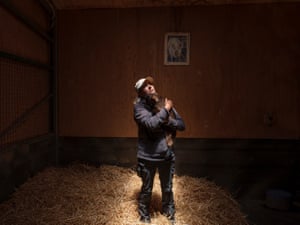
Edgar’s Mission supplies look after homeless, abused, injured or deserted animals, particularly livestock or “farmed animals”. It was based in 2003 by Pam Ahern after an encounter with a big white-cross piglet known as Edgar Alan Pig. Ahern stop her full-time job and constructed the sanctuary, which now sprawls over 153 acres of bucolic, Constable-esque surroundings. When young children are advised that Lucky “went to the farm …” that is most likely the kind of earthly paradise they think about. A property given over totally to the wellbeing of 432 rescue animals: ex-breeding pigs, injured lambs, one-eared survivors of canine assaults, cows born with blindness or different delivery defects, chickens, roosters, turkeys, rabbits, spring-loaded child goats and stray cats lounging in the solar.
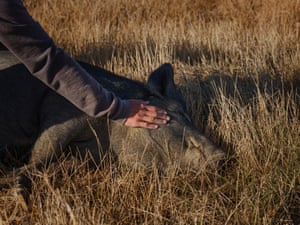
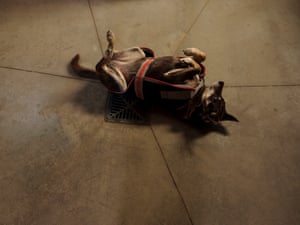
The Mission gives numerous types of rehabilitation, most of them overseen by certified vets, however I’m right here to examine one in every of their extra uncommon applications: studying to animals.
“We started the reading program a few years ago with two goats, Marieke and Michaela,” says Ahern. “Probably the most frightened goats I’d ever seen. They were climbing the barn walls to get away from us. It’s always the way with animals that come through here: we can treat their physical wounds, but psychological damage is much harder to fix.”
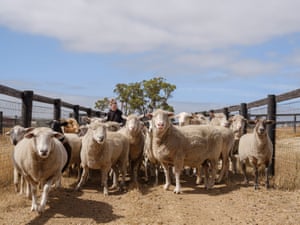
Ahern determined to strive studying to the goats. She’d heard about comparable applications getting used to deal with anxiousness in rescue canines, significantly ones who’d been mistreated and had been naturally suspicious of humans. For a number of weeks, she sat shut to Marieke and Michaela, studying them tales, protecting her voice calm, avoiding direct eye contact. “After a while, they took the initiative and started coming towards me. We eventually settled them on this fancy property down in Flinders,” she says. “Reading isn’t really about the words or the books. It’s just the soothing tones of our voice.”
Ahern put out a name for studying volunteers on Facebook. One of the ladies who answered was ex-academic and Kyneton native Nicky Peters. She’s been studying to injured animals at Edgar’s Mission for the final three years. “Usually children’s books,” Peters says, sitting on a plastic stool beside Anastasia, a fly-struck sheep present process rehab, and Rin Tin Tin, a child goat who strikes in excited sideways hops. “They seem to like Enid Blyton at the moment. Well, you can see!” Nicky holds up a number of goat-chewed pages from The Secret of Spiggy Holes.

“I’ve been a strict vegetarian most of my life, but I became a vegan a couple of years ago. Most of the staff here are vegan – there’s actually no animal products allowed on the property. And the reading program is just fantastic. I get so much joy from being around the animals, feeling their warmth and affection in some small way.”
Veterinarian and behavioural skilled Dr Emma Hughes says the Edgar’s Mission studying program could be distinctive in Australia, a minimum of for livestock and farmed animals. “We know animals do become calmer when they associate voices with something positive,” she says. “Reading works because it’s non-confrontational. Most of these animals are prey species, so they don’t like people getting too close or making direct eye contact. It’s a brilliant way to get humans to behave appropriately.”
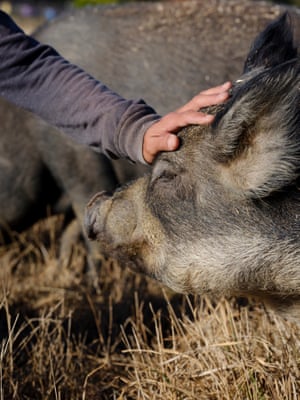
In the afternoon, Ahern organises a studying session for me with three sheep: Lady Samantha, Harry Potter and Harmony, a lamb whose little entrance legs are set in blue splints. I calm down inside a corrugated shed and pull out my copy of Roald Dahl’s Going Solo. “I’m not sure if you’ve read this before,” I say, barely self-conscious, “but it’s always been one of my favourites.” Lady Samantha offers me an inscrutable sheep stare. Harmony hobbles nearer and sniffs my hand, cautiously. Her wool is oily and smooth.
The sheep are somewhat standoffish at first, however after half-hour of studying they appear to have drifted off to sleep (I resolve to take this as a praise). Watching them causes an uncomfortable knot of non-vegan guilt, someplace just under the sternum area, blended with somewhat low-grade hypocrisy.
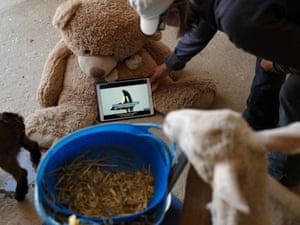
-
Anastasia, a not too long ago rescued sheep with debilitating flystrike, watches a wildlife video throughout her afternoon remedy session at Edgar’s Mission
Pam had warned me this kind of factor may occur. “I believe people don’t set out to be cruel to animals. I believe in the goodness of the human heart. And when people come and see the animals, these emotional beings who experience happiness and joy, fear and sadness, it really gets to you here.” She touched her chest and mentioned once more, “it really gets to you here.”




